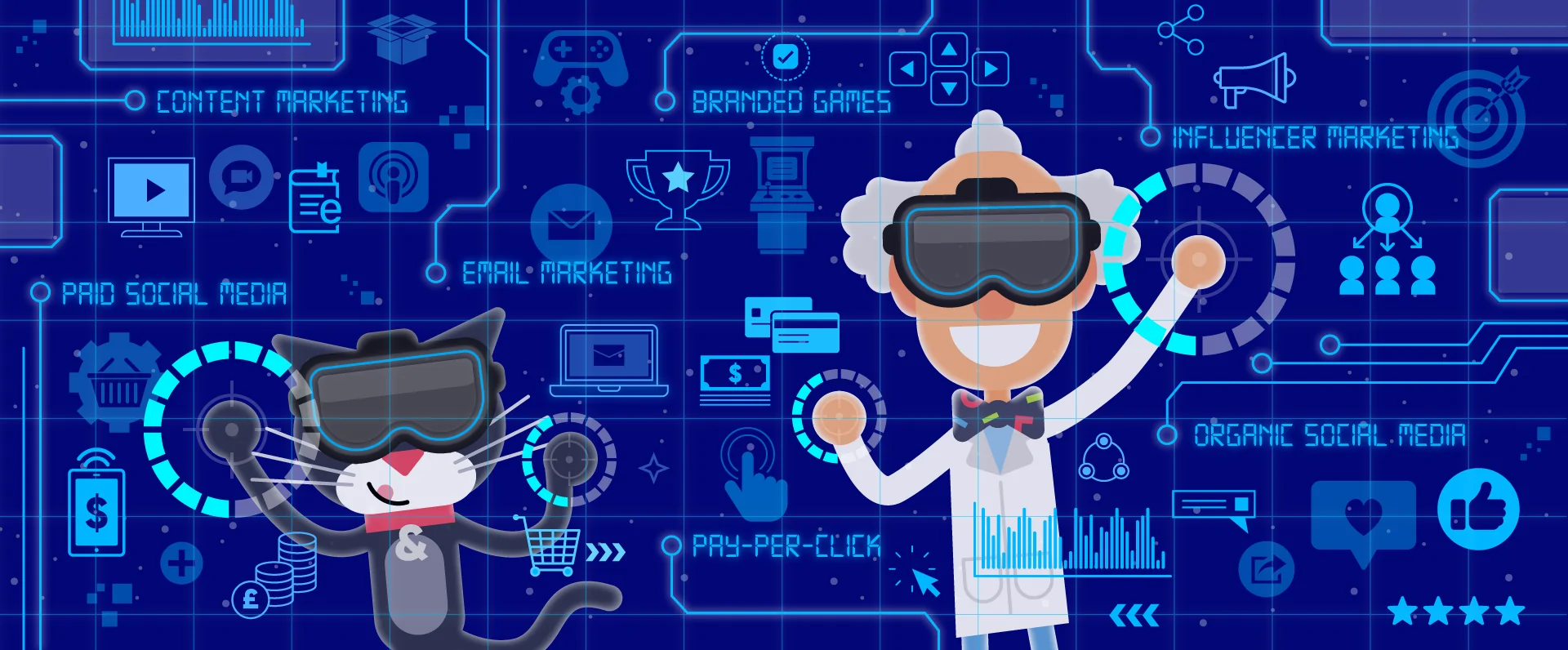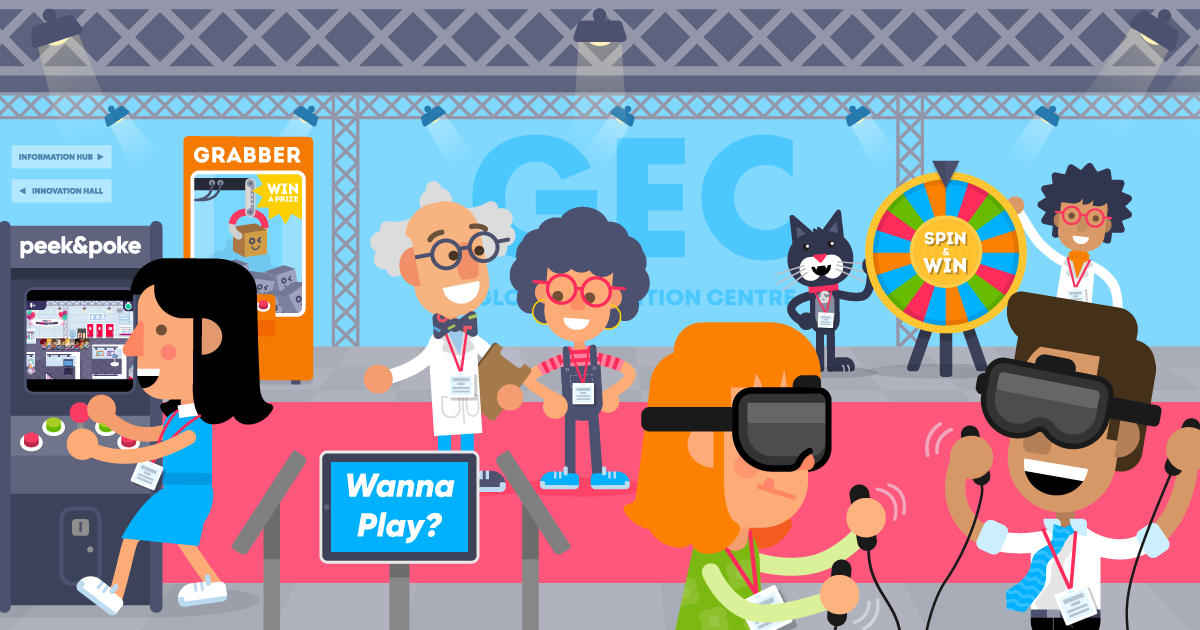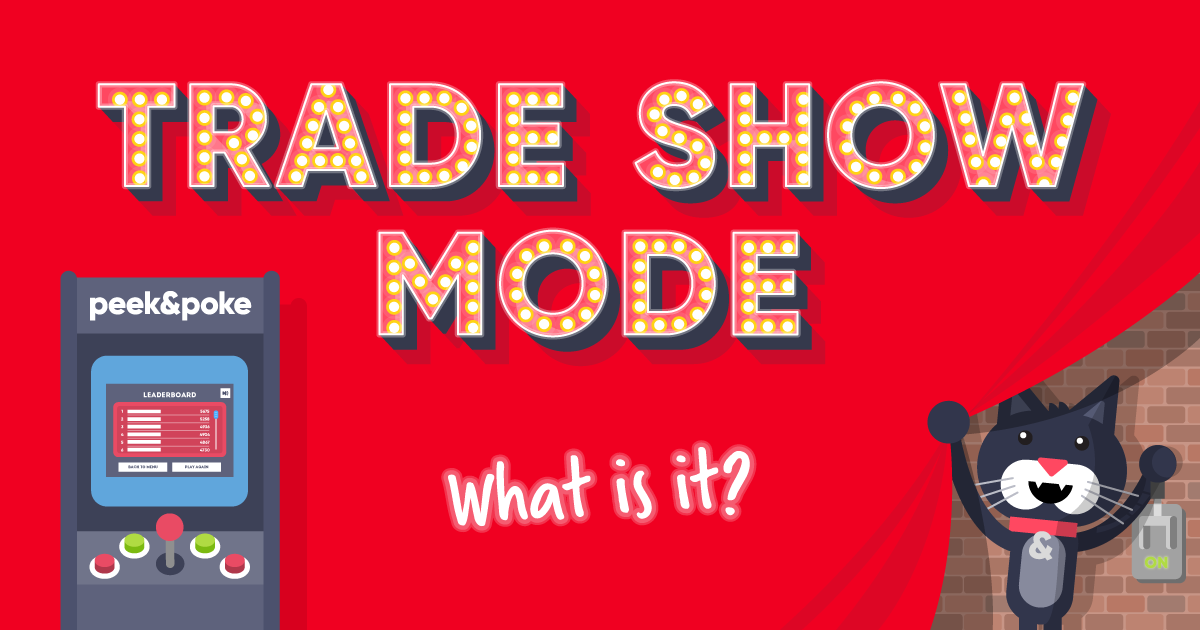Whether you’re an established IT enterprise or a start-up on a budget, this guide offers up tried-and-tested marketing strategies for tech companies that’ll help you raise brand awareness and position yourself in front of your target audience.
From content marketing and social media to little-known methods you may not have come across before, there’ll be something in here that you can take away and start applying today.
If you’re a tech or software company looking to connect with decision-makers and maximise your marketing investment, let’s dive in and discuss the strategies you’ll need.
Top marketing strategies for tech companies
Content marketing Email marketing Branded games Organic social media Paid social media PPC (pay-per-click advertising) Influencer marketing
Content marketing
If your tech company makes a product that solves a problem, then content should play a key role in your marketing plans. By creating useful content around the problem that your product solves, you’ll make it easier for people to find you online.
From videos and podcasts to eBooks and blogs, content marketing comes in many shapes and sizes. It’s all about being original, genuine, and addressing pain points to solve real-world problems.
Above all, it’s important to be helpful and not dive straight into selling your stuff at every opportunity. You know that shiny new software solution you just built? It’s probably a great product – in fact we’re sure it is – but people won’t know they need it until you demonstrate that you understand their problems in the first place.
When done correctly, an effective content marketing strategy will help you to build trust and credibility to position yourself as a reliable authority within your sector. Do that, and selling those shiny new products will become a whole lot easier.
If you’re reading this, then it means our own marketing team has done a great job with their content (can we get a raise for those guys?). Because ultimately, it’s our goal to help you with your marketing efforts.
Email marketing
Email is like the old, faithful Labrador that never leaves your side (albeit less cuddly and not as dependent on you for food). While social media platforms have come and gone, email has remained steadfast in its reliability for communicating directly with an audience. In fact, 85% of B2B marketers say it’s their most used form of content marketing.
Not only is email ubiquitous, it’s also one of the only marketing channels that you can truly call your own. If you’re a software company looking to promote a new product or inform customers about an important update, email lets you get straight into their inbox.
While building and maintaining an email list involves some effort, the reward is a direct line of communication with both existing clients and new prospects. You can take things a step further with audience segmentation, which allows you to connect more effectively with specific groups of individuals.
Better yet, why not look into interactive email marketing ? With your subscribers likely to be receiving multiple emails from other businesses and brands per day, this is a great way to cut through the noise and delight your readers with something new.
Branded games
Didn’t we say we want to help you with your marketing? Turns out branded games are an incredibly effective way to build engagement and create lasting connections with your audience.
Also known as ‘gamified marketing’, this form of interactive content has the power to engage players for over 20 minutes on average – and sometimes over an hour ! In an age where attention spans are on the decline, these are the kind of stats that most marketers can only dream of.
The good news is you can dare to dream. Just take a look at these Data Booster and Bug Basher games (both with free demos), which offer a cost-effective way to customise an experience that’ll raise brand awareness, capture qualified leads, and drive clicks through to your site.
With more and more companies discovering the sheer power of gamification in their marketing strategy, now is the time to get on board. If you’re unsure, you can find out more about the great reasons to use games in your marketing .
Organic social media
LinkedIn. Facebook. Twitter. Instagram. These social media platforms are free to use and have enormous potential reach, with estimates suggesting that the number of worldwide social network users could increase to 4.41 billion by 2025 .
This is the place to build an audience, nurture relationships, and leverage the content from other platforms such as your website. Just try to keep things interesting with a mix of different formats such as blog posts, videos, surveys, quizzes, and games .
Remember that social media is also all about sharing. If you create something that informs (like an original infographic) or entertains (cat memes, dog memes, ANY memes), your followers will be much more likely to share it around. How you incorporate that new software product into a cat meme is on you.
When it comes to social media marketing, we recommend putting users first and sticking to the 80/20 rule. 80% of your content should educate, entertain, or solve problems, while 20% is reserved for promoting your business and your specific solutions.
As is the case with general content marketing, organic social requires consistency and patience before you start to see meaningful results. And while the organic reach of posts may not be quite what it once was, there’s a lot of potential when you combine organic posting with paid social activity.
Paid social media
It’s no secret that social media platforms today rely heavily on ad revenue. In the US alone, social media ad spending was expected to rise to 49 billion USD in 2021.
In return, these platforms provide advertisers with rich features and data to get very specific with their targeting efforts. If you’re looking to promote a new tech solution to a very niche audience, you can dial in the details of your buyer persona to make sure your advertising budget is put to good use.
If you’re new to the world of paid social, LinkedIn is an obvious place to get started. Any B2B marketer worth their salt knows LinkedIn is an effective source for generating leads, with studies showing that 80% of all B2B leads come from the platform.
While paid social generally costs more than PPC (see below), it tends to result in better-quality leads and therefore higher conversion rates. Ultimately, where you choose to place your ad spend will depend on the type of tech company you are and your specific marketing objectives.
PPC (pay-per-click) advertising
PPC advertising is the strategy of having your ads appear in the search results of Google and other search engines. By bidding on specific keywords, you have the opportunity to drive clicks to your website or specific landing pages that can in turn generate qualified marketing leads.
To amplify your efforts, you can also invest budget in retargeting through the Google Display Network . This works by serving up relevant ads to a web user who has already shown an interest in your brand or product.
This could be someone who has visited your homepage, went to one page but not another, or added a product to their shopping cart but then abandoned the purchase before completing. With the A/B testing features offered by Google, you can tweak your designs and ad copy to find out what works best for you.
Influencer marketing
Influencer marketing – also known as sponsored content – is an increasingly popular form of marketing for tech and software companies. According to a survey by TopRank Marketing , 90% of B2B companies in general expected their budget for influencer marketing to increase or stay the same over the course of 2021.
Before purchasing a new product, customers will often seek the advice of an industry expert to help them make a decision. By partnering with those industry experts, you’ll not only get your product or solution in front of the right audience – you’ll also benefit from the loyalty, credibility, and influence that person has built with their audience over time.
To get started with influencer marketing, you first need to know who your target buyers are, what challenges they face, and where they spend their time. By learning more about who they follow on social media, which blogs they read, and the videos they watch on YouTube, you can then build a picture of potential industry experts to reach out to.
It’s important to note that you need to have a certain level of credibility yourself before you go off contacting influencers to negotiate terms and prices. From quality blog content and email marketing to a solid social media presence, these pieces all come together to create a stronger whole.
When done correctly, influencer marketing is a win-win-win scenario for all parties involved (for you, for the influencer, and for the influencer’s community).
Bringing these marketing strategies together
Successful marketing can be a long game, but combine some of the approaches above and you’ll be in a strong position to help your users and grow your business.
If you have a lot of budget to work with, don’t be afraid to experiment with the paid strategies we’ve outlined here. If you need to be a little more careful with the purse strings, there’s still a lot you can achieve through quality content, email, social media activity, and branded games .
Now go forth and be creative in your marketing endeavours – we wish you the best of luck!



